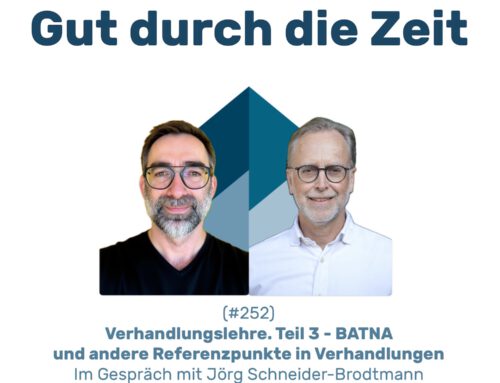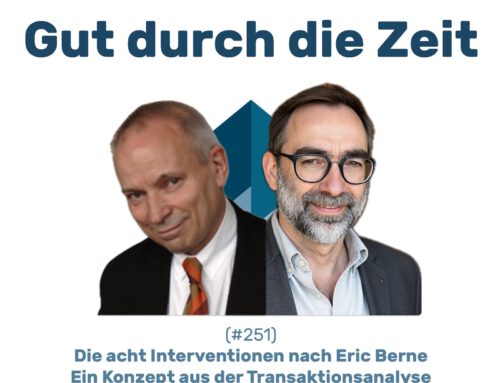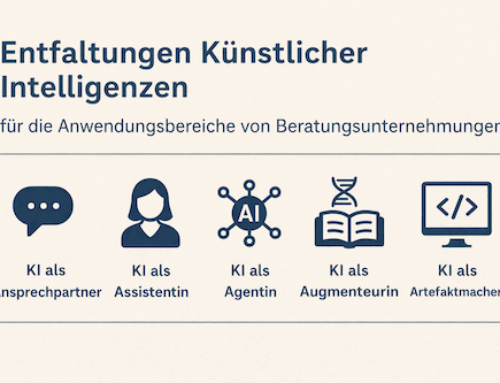Essay: What is said and heard when everyone jumps in the drama triangle.
How transactional analysis models (conflict) communication
in: Conflict Dynamics 1/2023, p. 9-18
Dr Sascha Weigel
Summary
This article introduces the communication model of transactional analysis and explains the advantages and disadvantages for conflict management, especially in the context of mediation. The three basic forms of transactions – complementary, irritating and covert transactions – are presented using concrete case examples and prepared as basic concepts for the two process models of transactional analysis: the drama triangle and psychological games.
Extracts
Introduction
Conflicts are communication processes that consist of uncoordinated problem-solving ideas and attempts by the parties and whose communicative collusions (can) lead to escalation. Mediation is about dealing with a conflict in which the communication contributions are harmonised – initially by slowing down and interrupting conflict resolution ideas. Ultimately, mediation should lead to a joint, agreed decision by all parties. When dealing with conflicts, it is advisable to abandon the idea that there must be a conflict by the parties involved be processed, This must be illuminated and explored in order to resolve it, because it acts like a knot in the network of relationships. Rather, it seems to make sense to deal with the uncoordinated attempts to solve the problem as such in mediation, instead of treating them as a knot. a The aim is to declare a conflict process in which all sides play their part. In other words, there is no one conflict, but each party has a definition of the problem and their attempts to solve it, which collide with the other party's (parties') definitions and attempts to solve the problem. Mediations therefore quite rightly start with the parties each visualising themselves. This "mutual understanding" is the basis for joint decisions (final agreement).
The psychological school of transactional analysis, which has its roots in both depth psychology and behavioural The mediation process is a part of humanistic psychology (see Schlegel and Jucker 2011; Schlegel 1987). It provides numerous supporting concepts for the endeavour of mediation. In the following article, the psychological school of transactional analysis will present the concept of of interpersonal communication. This model for analysing transactions ultimately also gave its name to the psychological school around Eric Berne, who founded transactional analysis (as a school)….
…
In conflict situations, just as in mediations in which conflicts are to be dealt with, irritating transactions often occur. Here, TA in the narrow sense helps mediators to identify conflict dynamics and visualise them graphically, for example. This sometimes has not only a clarifying but also a decelerating effect. It also makes it possible to discuss expectations that have been disappointed on both sides. For example, an irritating transaction and the formal-communicative disappointment of expectations it contains ("You are reacting with a different ego state than I expected...") offers the opportunity to address the factual and content-related expectations. It is not uncommon for these disappointed expectations to conceal unconscious hopes, wishes and needs which, once they have been illuminated and clearly named for everyone, can be utilised to find concrete solutions.
Analysing irritating transactions is of enormous importance in conflict analysis, especially at the beginning of conflict resolution processes, because it leads directly to the interactional contradictions, the issues in dispute and escalation stages. It is irritating transactions, for example, that illustrate the so-called switch (change of ego state) in the context of a psychological game as well as the role change in the drama triangle: seemingly suddenly, "directly after the comma" so to speak, a conflict party no longer acts in a persecutor role, but in a victim role ("Leave me in peace with your concerns and worries about data protection, I can't take it anymore!")
The second communication rule of transactional analysis, which relates to irritating transactions, is as follows: Irritating transactions interrupt – the current communication flow (change of topic, pause, cancellation) as a result of the surprising choice of ego state – and initiate a new section in the communication flow.
The response has a special stimulus function in irritating transactions. In conflict situations, for example, this "stimulus function" of the response creates the pull effect that makes it so difficult for those involved in the conflict to escape the escalating conflict communication. It is this struggle for (one's own and others') ego states that emphasises the escalating communication. Irritating transactions force the addressee to reorient themselves in the interaction, the result of which "must" be communicated immediately. So whoever communicates in the conflict confrontation The fact that one person retains the upper hand by "persuading" the other to adopt a certain ego state can be recognised by the irritating transactions or, more specifically, by the functional ego states that are ultimately targeted and activated.
This means that the participants decide (after a brief irritation) how they (want to) react to the offer of their own change of ego state or to the fact of a surprising change of ego state by someone else. The irritation and necessity of reorientation says nothing about the value or preferability of irritating transactions. This is because both the escalation of a conflict and its de-escalation are regularly accompanied by ego-state-related irritations.
In this way, changes of ego state are also targeted in counselling and mediative conversations, in order to bring about processes of insight and clarification which, in the context of ego state analysis, are generally aimed at activating the adult ego state and ending the resistant, rebellious, over-adapted or even dominant and overprotective modes of behaviour.
Irritations are therefore not escalating per se, but can also be the result of a constructive intervention. They can also herald a productive change of perspective for one party to the conflict.
Viewed as a whole, irritating transactions prove to be the important signposts for – effective – conflict management.
Complete bibliography for the essay:
-
Berne, E. (2005). Basics of group treatment. Thoughts on group therapy and intervention techniques. Paderborn: Junfermann.
-
Berne, E. (2001a). Games of the adults. Hamburg: Rowohlt. (Original: Berne, E. (1964). Games people play. New York).
-
Berne, E. (2001b). What do you say after you say "Hello"? Psychology of human behaviour. Frankfurt. (Original: Berne, E. (1972). What Do You Say After You Say Hello? The psychology of human destiny. New York: Grove Press).
-
Cornell, W.F., de Graaf, A., Newton, T., Thunnissen, M. (2016). Into TA. A Comprehensive Textbook on Transactional Analysis. London: Routledge.
-
Geck, T. (2014). From the Drama Triangle to the Game Pentagon. In: Weigel, S. (ed. 2014). Theory and practice of transactional analysis in mediation. A handbook. Baden-Baden: Nomos (482-494).
-
Gührs, M., Nowak, C. (2014). The communication model of transactional analysis. In: Weigel, S. (ed. 2014). Theory and practice of transactional analysis in mediation. A handbook. Baden-Baden: Nomos (137-158).
-
Hay, J (2009). Working it out at work. Understanding attitudes and building relationships. Hertford: Lightning Source Inc.
-
Joines, Vann S., Stewart, I. (2008). Personality Styles. Wie frühe Anpassungen uns prägen, vol. 1, Handbuch für Therapie und Beratung, Paderborn: Junfermann.
-
Kahler, T. (2008). Process Therapy Model. The six personality types and their forms of adaptation. Weilheim: Process Training and Consulting (publisher).
-
Karpman, St. B. (1968): Fairy tales and script drama analysis. Transactional Analysis Bulletin. (39 - 43) (taken from Transactional Analysis Bulletin (1976). Selected Articles from Volumes 1 through 9 (51 - 56).
-
Lohkamp, L. (2014). The drama triangle as an instrument for analysing and intervening to clarify conflict dynamics. In: Weigel, S. (ed. 2014). Theory and practice of transactional analysis in mediation. A handbook. Baden-Baden: Nomos (318 - 333).
-
Mohr, G. (2009). Ego states - the unity and difference theory. Journal of Transactional Analysis (26, 4) 199 - 217.
-
Oller-Vallejo, J. (1987). Withdrawal – A positive and negative basic form of adjustment, in addition to compliance and rebellion. Journal of Transactional Analysis in Theory and Practice (4) 66-75(original print in Transactional Analysis Journal 1986).
-
Schlegel, L., Jucker, R. (2011). Transactional analysis. An interdisciplinary psychotherapy that creatively combines depth-psychological and cognitive-therapeutic aspects in particular. Zurich.
-
Schlegel, L. (1987). Reflections on the concept of transactions, especially ambiguous transactions. Journal of Transactional Analysis in Theory and Practice (4,. 1) (29-34).
-
Schulz von Thun, F. (2008, original 1981). Talking to each other 1 – Disorders and clarifications. General psychology of communication. Reinbek: Rowohlt.
-
Shannon, E., Weaver, W. (1963): The Mathematical Theory of Communication, Univ. of Illinois Press.
-
Stewart, I., Joines, Van S. (2008). Transactional analysis. An introduction. Freiburg: Herder.
-
Watzlawick, P., Beavin, J.H., Jackson, D.D. (2000, original 1969). Human communication. Forms, disturbances, paradoxes. Bern: Huber.
-
Watzlawick, P., Beavin, J.H. (1990): Some formal aspects of communication. In: Interaction. Human problems and family therapy. Watzlawick, P., Weakland, J.H. (ed. 1990). Munich: Piper.
-
Weigel, S. (2012): Konfliktmanagement in der Verwaltung des aktivierenden Staates mit Transaktionsanalyse und transaktionsanalytisch fundierter Mediation, Berlin.
-
Weigel, S. (2017a). Transformative mediation and transactional analysis. Supporting transformative mediation with concepts of transactional analytical counselling, Konfliktdynamik (6, 1) 34-45.
-
Weigel, S. (2017b). Transactional analysis in conflict coaching. Conflict Dynamics (6, 4) 248-259.
-
ZTA – Journal of Transactional Analysis (2015). Panel discussion at the DGTA Congress 2015, Structure and dynamics - can they go together? Journal of Transactional Analysis (32nd, 4) 318 - 340.







Leave A Comment